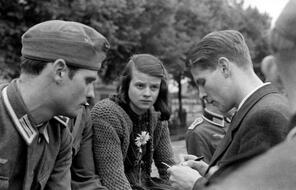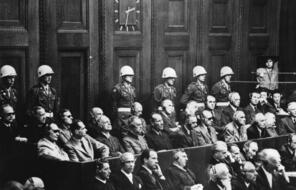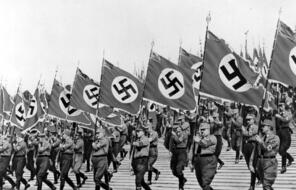Handout
Brief History of Paragraph 175 in Germany
This handout provides a selection of dates and events that align with the content explored in the Paragraph 175 lesson and accompanying film.
This is a timeline of selected dates and events that align with the content explored in Facing History & Ourselves’ Paragraph 175 lesson and accompanying film.
- 1871: Germany first includes Paragraph 175 in its constitution, which states: “Unnatural sexual acts (widernäturliche Unzucht) committed between persons of the male sex, or by humans with animals, is punishable with imprisonment; a loss of civil rights may also be sentenced.”
- 1918–1933: After World War I, Germany transitions to a democratic republic called the Weimar Republic. During this time, German cities are less likely to uphold Paragraph 175. Berlin becomes internationally known as a “gay Eden.”
- 1933–1934: Hitler and the Nazi Party come to power. Some of their first targets are LGBTQ+ communities. Gay and lesbian organizations are shut down, books in sex researcher Magnus Hirschfeld’s library are burned, and enforcement of Paragraph 175 in cities begins anew. Gay men are arrested and sent to jail and, later, to labor or concentration camps.
- 1934: The Night of the Long Knives occurs. Scores of Hitler’s perceived enemies are killed during this purge, including SA leader Ernst Röhm, the only known gay member of Hitler’s inner circle.
- 1936: The revised Paragraph 175 cites “evidence” that can lead to a man’s arrest, including gossip suggesting that a man is gay, mail correspondence between men when at least one is presumed to be gay, and any physical contact between men when at least one is presumed to be gay.
- 1936–1945: Gay men of Christian faith are deported to labor and concentration camps. Gay Jewish men are sent to death camps. While in camps, gay men wear a pink triangle, later reappropriated by LGBTQ+ communities as a symbol of gay pride and resilience.
- 1945–1969: Gay men, including survivors of labor, concentration, and death camps, continue to be persecuted under Paragraph 175. There is no survivor recognition for gay men who survived the Holocaust.
- 1968–1969: In 1968, East Germany decriminalizes same-sex relations between men. West Germany follows suit in 1969. While there are no longer arrests under Paragraph 175, the law remains a part of the German constitution.
- 1994: When East and West Germany reunify, Paragraph 175 is struck from the new German constitution. Survivors of the Holocaust who were in camps because of Paragraph 175 continue to fight for recognition as survivors. Unlike other survivor groups, they are not given restitution for harm.
- 2002: Gay men who were arrested under Paragraph 175 by the Nazi regime have their records annulled.
- 2003–2008: Pierre Seel, one of the survivors featured in the film, is officially recognized as a Holocaust survivor by the International Organization for Migration and has a street named after him posthumously in his French hometown.
- 2016–2017: The records for all gay men arrested under Paragraph 175 from 1949 to 1969 in both East and West Germany are expunged. Those men who were jailed during this period are paid restitution; if they died before 2017, gay rights groups receive donations in their honor.
Using the strategies from Facing History is almost like an awakening.
—
Claudia Bautista, Santa Monica, Calif












